We continued our voyage in Arequipa, the second largest city in Peru. Competition between Lima and Arequipa is fierce, so Arequipeños take pride in the power of their protests and their ability to shut down the entire south of Peru to get their way in Lima. The south is rich in mining, but most of the money goes to Lima. Their citizens joke that Arequipa is separate from the rest of Peru. It went so far at one point that they had their own passports. More importantly, they have their own beer called Arequipa.
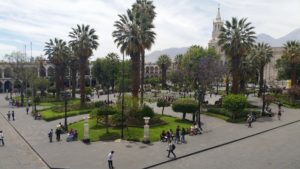
Our hostel, Orkkowasi Casa de Montana ($30 CAD for a private room, no bath) was pretty nice and conveniently close to the city centre and Plaza de Armas. Pro tip – if you’re looking for the best area to stay in while in Peru, look for the Plaza de Armas. That’s generally where you want your accomodations to be so you’re close to the restaurants, shops, and bars. We took a quick stroll through the streets and found a little coffee shop for Clair to get her fix. The city of Arequipa is renown for their cuisine. It was immediate that we were going to be able to finally get some healthy options, away from deep fried everything that we’d experienced so far.
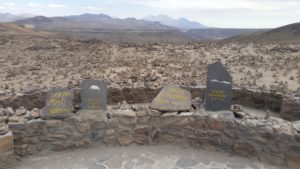
The city is surrounded by three huge volcanoes; Chachani (6025m), Misti (5822m), Pichu Pichu (5664m). Out of the three, Misti Volcano is still active. You can sometimes see smoke coming from its peak. We were told that if the Misti Volcano blew, it would destroy Arequipa in 20 seconds (Clair – Why would anyone ever tell us that?).
Day 7 – Arequipa: Walking Tour
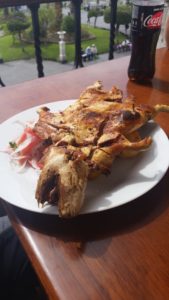
The next day we participated in a free walking tour. It’s not necessary to book this one in advance, you can just show up at a nice little coffee shop known as Chaqchao Café at 10:00 AM. The tour is offered in either Spanish or English. Remember, these tours are free and the guides depend on tips for their salary. Our German friends arrived in Arequipa that morning and joined us on the tour. The bar had been raised considerably from our expectations of a city tour after our amazing experience in Medellin. This one was not quite as good but is still worth checking out. We did come away with great photos and some useful information. The highlights included a tour of the food market, which was very well organized compared to others that we’ve seen, and a traditional alcoholic drink at the end of the tour. Afterwards, we had lunch with our friends and decided to try some traditional Peruvian food. One dish, known as Cuy, is Guinea Pig. Like most things, it tasted like chicken.
Day 8/9 – Colca Canyon: Flight Of The Condors
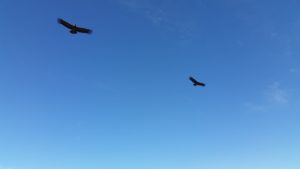
There are several companies offering guided tours to the Colca Canyon for around $45.00 CAD. This includes meals, one-night of accommodation, and shuttle service. Note – there is an additional fee of $30.00 CAD to enter the national park. It really doesn’t matter which company you end up with, but the competition offers the opportunity to bargain the price for a couple of dollars if you want. Unfortunately, the shuttle arrives at your hostel at 3:00 AM. Our first stop was along the highway, where travelers can watch Condors (one of the largest flying birds in the world) soar above your head.
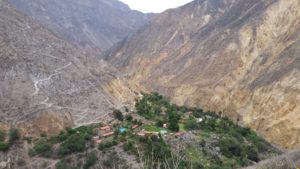
After being on the road for 4 hours, we arrived at the starting point for our hike. The Colca Canyon is the second deepest canyon in the world, so you best be ready to complete a rather rigorous two day hike. Bring lots of water and layers of warm clothes. You are carrying all of this in backpack, so be mindful of what you are bringing and conscious of the affects of altitude. Go slow! It was tough to watch some people struggling down the mountain. The first day was around 5-6 hours of a mostly downhill descent until you arrive to the Oasis at the bottom of the canyon. This is where you will spend the night. With no rest for the wicked, the second day starts at 5:00 AM with a 3 hour hike up hill with no breakfast (Clair – cardio fast!!!) So, be sure to also pack snacks. The change in elevation makes breathing very difficult.
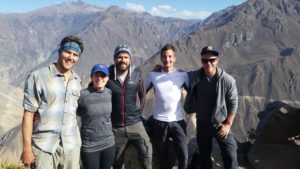
There is an option to take mules on the final ascent, and many people took advantage of this. We made it up in 2 hours and couldn’t wait for breakfast.The tour continued on with a few more stops on our way back home for some amazing views of the country side and a stop at the hot springs (this was not included in our tour, so make sure you have some cash to pay the entrance fee.) We finally arrived back to our hostel at 6:00 PM.
Day 10/11 – Arequipa: Rest Days
Nothing exciting…we were sore AF!
Day 12-14 – Puno & Lake Titicaca: Haha…Titi…caca
Here we go again, another 7 hour bus ride to our next destination. Our German friends were on the same bus as us, but they had a long night of partying and were still “tired” for the ride. Not sure how they did it, but it made for a hilarious wait for the departure.
Puno lies on the shore of Lake Titicaca and is at a higher elevation than any other city in Peru (12,500 ft). It’s super cold here! The city has a nice main strip filled with restaurants, bars, and shops. We loaded up on warm clothes at good prices.
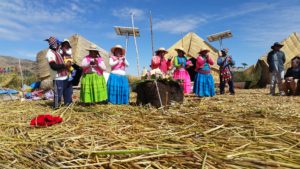
At our hostel, we booked a guided day tour of Lake Titicaca for $30.00 CAD. It started at 7:00 AM with shuttle service at your hostel. We hopped on speed boats to the first stop of the “Floating Islands”, where the Uru natives have built human-made floating islands for their communities to live on. It was like walking on a water bed. The Uru use the roots of reeds to form the base then anchor the island to the bottom of the lake with ropes and sticks driven in the bottom of the lake. They then weave fresh reed to form the top layer. As the reeds dry, they break up and eventually rot. A fresh layer of reeds has to be added every 15 days, and the islands last for around 25 years.

The second stop was to Taquille Island in the middle of the Lake Titicaca. Here, the Taquileños call home. These inhabitants are known for their fine handwoven textiles and clothing. After lunch we jetted back to Puno. We spent the next days finishing the second season of Narcos and readied ourselves for our final Cruz del Sur bus trip to Cusco.
Day 15 – Cusco: No More Bus Rides!
And here we are! We arrived here ‘sans incident’ except Clair sitting on gum, our bus driver hitting the bus station, and literally a race (with cars) taking place as we ascended the curves up to Cusco.
Next stop, Machu Picchu!
Incredible adventures you’re having! Thanks for the tips and tidbits – really adds to the entertainment value. I wish you continuing safe travels!
Thanks Linda:) It’s been pretty amazing!